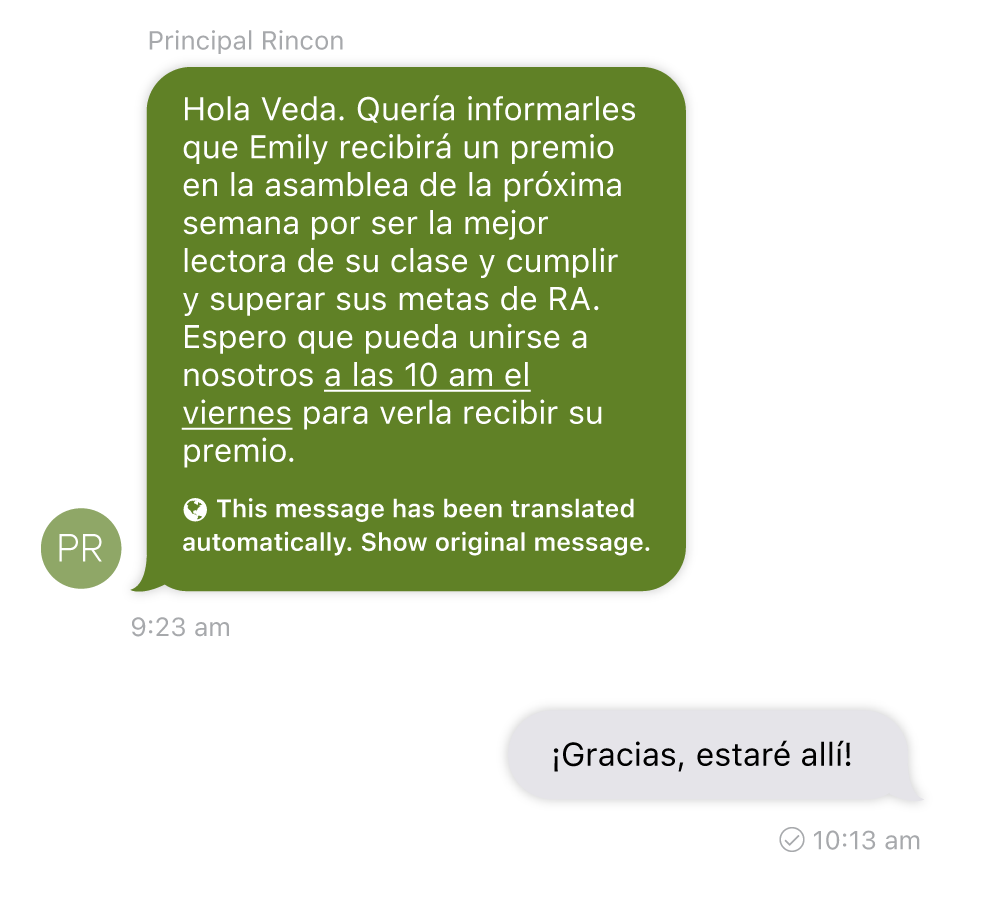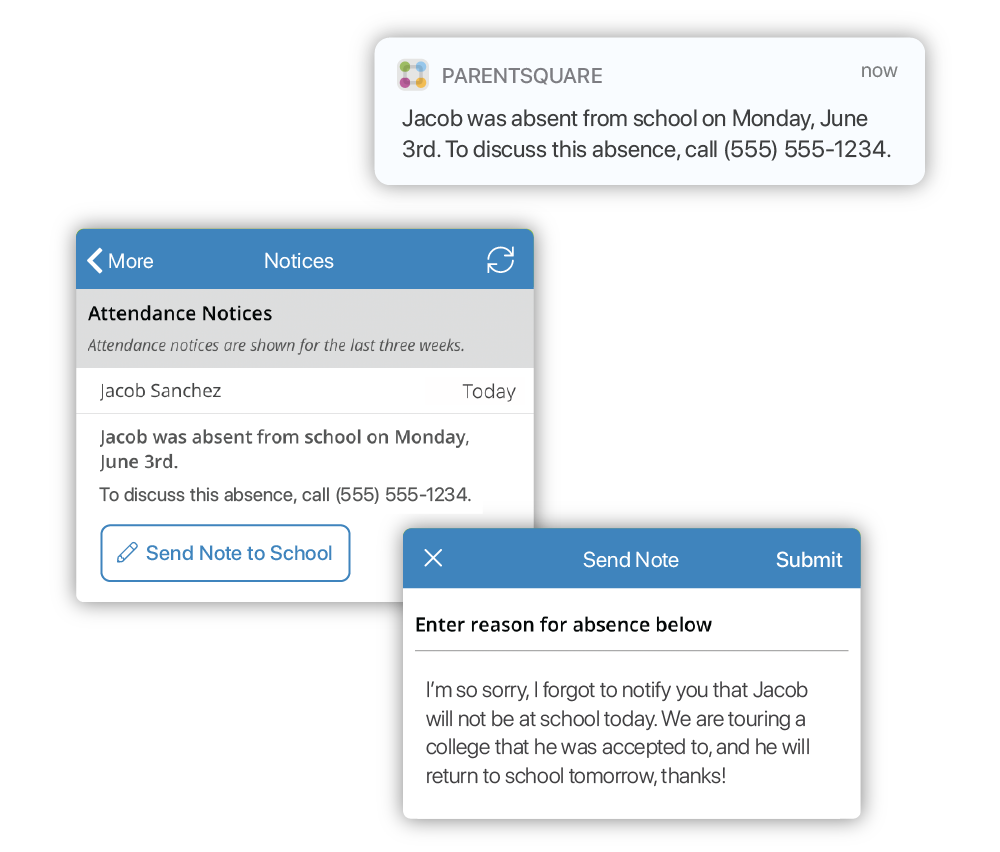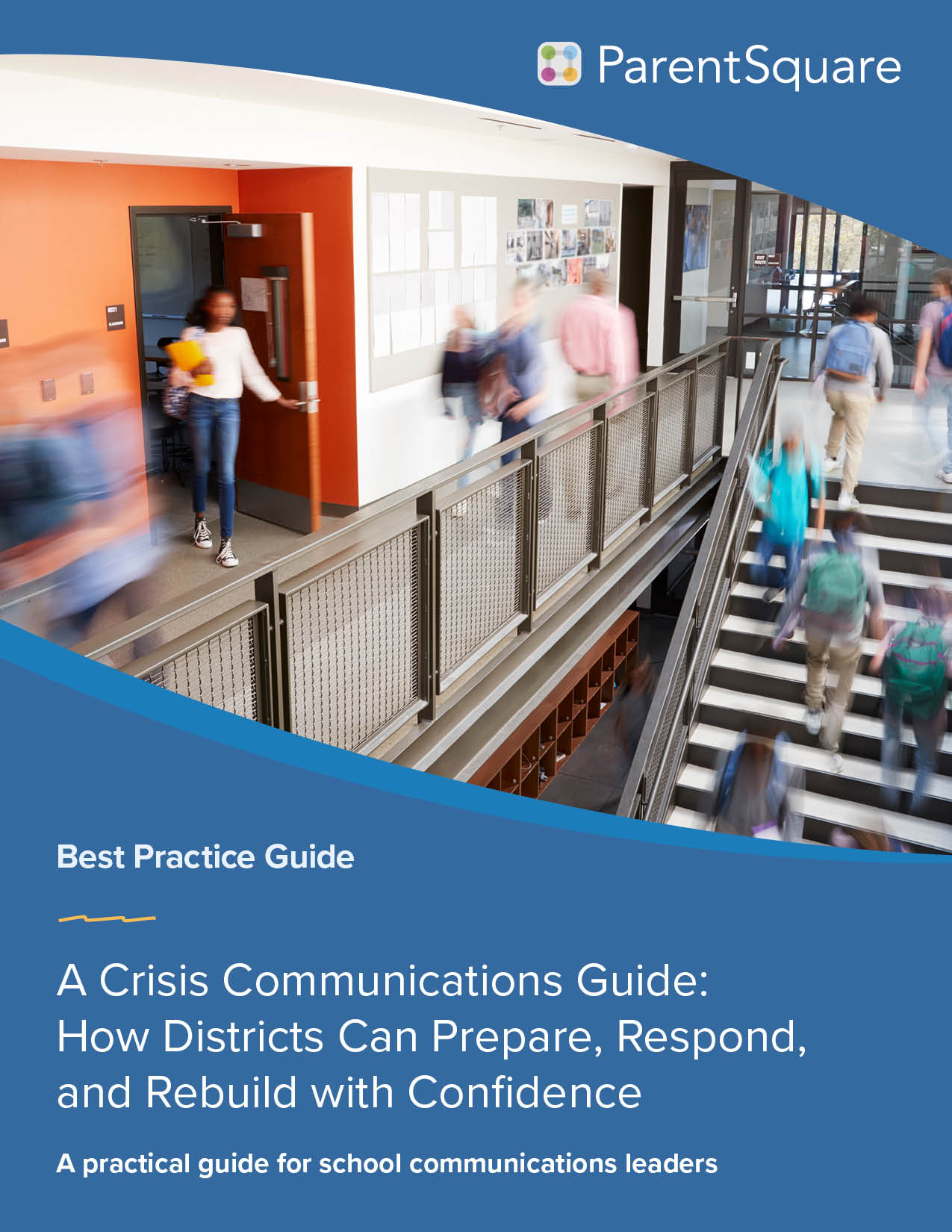
Alex Meis, MPA, Sr. Director of Product and Chronic Absenteeism Expert, ParentSquare
With the school year concluding, district and school leaders can reflect on success and areas for improvement, with chronic absenteeism being a key focus for many.
What is chronic absenteeism?
A student who misses at least 10% of the school year—or approximately 18 days in most districts—is considered chronically absent.

But here’s the good news: Summer is the ideal time to plan how your district will tackle chronic absenteeism in the year ahead, and one of the most effective places to start is with family engagement. Research shows that strong partnerships between home and school lead to better student engagement, improved attendance, and ultimately, stronger academic outcomes.1
As you map out your priorities for the 2025-26 school year, here are five areas to focus on that can help strengthen family engagement and lay the groundwork for improved attendance this fall and beyond.
1. Assess the accessibility and equity of your communication tools
As you look back on the school year and reevaluate your approach to communications, it’s worth asking: Did your current communication tools help you reach every family this year? Reaching families means more than message delivery—it’s about clarity, timing, translation, and the ability to respond.
This summer, take the time to identify:
- Were messages delivered in families’ preferred languages?
- Could parents and caregivers respond quickly and easily? Was two-way dialogue encouraged, or were communications mostly one-way?
- Were multiple channels like text, voice, email, and app available to meet families where they are?

Accessibility and equity are foundational. For example, real-time translation helps non-English-speaking families receive timely, accurate information, allowing them to engage in meaningful dialogue about their student’s education. Without it, important attendance alerts or notifications might be delayed, misunderstood, or ignored.
It’s also important to consider automation. When schools rely on manual entry and patchwork solutions, critical messages about absences can be delayed. Automated, customizable alerts keep families in the know with real-time, actionable information—without overburdening staff.
The bottom line: A unified platform that supports inclusive communication practices doesn’t just save time. It helps build trust, encourages responsiveness, and helps facilitate early intervention.
2. Plan for consistent, proactive attendance messaging
A missed day here or there might not seem like a big deal to families, especially early in the school year. But those occasional absences can quickly add up. In fact, some families often don’t fully understand the impact of student absences, so they don’t monitor or prioritize attendance.
Proactive communication is essential to setting expectations and helping families understand the long-term impact of chronic absenteeism, and it’s especially important at the beginning of the school year.
This summer, map out a family communication plan that includes:

- An easy-to-understand overview of your school or district’s attendance policy
- Messaging that emphasizes why attendance matters
- A back-to-school attendance pledge for families to sign, reinforcing shared accountability
- Templated attendance reminders around key milestones like the start of the school year, winter or spring break, and testing weeks to save staff time when school is back in session
You can also create automated attendance notices that can be customized with student-specific details. These notifications should be prompt and delivered via text, app, voice notification, and email to meet families where they are.
The bottom line: With a proactive messaging plan in place, your team will be ready to keep families informed, reinforce expectations, and support good attendance from the very beginning of the school year.
3. Make space for two-way communication and empathetic dialogue
Chronic absenteeism is often a result of circumstances that families are privately navigating, like transportation, health concerns, caregiving responsibilities, or a child’s anxiety about school. Schools can never assume they know why a child is chronically absent, and no parent wants to feel like they’re being judged or blamed for a situation they may be struggling to manage.

Create space for two-way communication so families can share what’s really going on. In turn, schools can respond with empathy and support.
Consider this:
- Can families respond easily to school messages via text, app, email, or voice?
- Are responses translated automatically to ensure every family can participate in the conversation?
- Do staff have tools and guidance for following up personally and compassionately
Some situations call for more than a message. In these cases, phone calls remain one of the most effective ways to connect with families who may be more receptive to verbal communication or need help navigating sensitive topics.
Phone calls: A powerful tool for addressing chronic absenteeism
Tools like Virtual Phone let school staff call families from anywhere, without using personal numbers—and it’s all tracked in the ParentSquare platform families are already using.
When schools lead with empathy, families are more likely to engage and more willing to partner on finding a path forward from chronic absenteeism. Every conversation is an opportunity to build trust and better understand the barriers students may be facing.
4. Use positive, relationship-centered communication to build trust with families
If the only time families hear from school is when something is wrong, it creates a transactional, compliance-driven dynamic that can be hard to shift, especially when attendance issues come up. Instead, prioritize building positive, consistent communication into your outreach plan from the start.
Did you know?
A parent of a chronically absent student, missing 18 days of school, has organically received dozens of forms of communication including: 18 one-way absence autocalls, several attendance letters in the mail, and many phone calls asking for reasons for absenteeism. None of which are positive.
Ask yourself: How can you ensure a healthy balance of required forms of communication with those that get to the heart of the absenteeism matter?

When families receive encouraging messages, classroom updates, or student shoutouts, they feel more connected to the school community and are more likely to engage proactively if concerns do come up.
Think about how you can:
- Celebrate attendance improvements or milestones, not just perfect records
- Share photos, videos, or quick classroom moments that show students thriving
- Send school-wide newsletters or announcements that keep families informed and involved
Visually engaging communications help reinforce a school culture built on trust, transparency, and shared success. With the right tools, you can streamline this kind of effective messaging and make it easier for staff to share positive news across channels without duplicating efforts.
The bottom line: By prioritizing connection over correction, schools can foster stronger relationships and create a more supportive and collaborative environment for tackling attendance challenges together.
5. Empower staff to make data-driven decisions
Reducing chronic absenteeism takes more than just tracking attendance—it requires giving staff access to the tools and actionable data they need to respond effectively. When school teams are equipped with the right information, they can intervene earlier and support families more strategically.
This summer, take time to ensure that key roles in your district have the processes and visibility in place to act on attendance data.
Help staff use data to:
- Identify which families aren’t being reached due to inaccurate, missing, or outdated contact information
- Monitor follow-up activity after absences are flagged
- Spot attendance trends
- Track which outreach strategies are improving engagement
Accurate data makes all the difference
A ParentSquare benchmark survey found that only 39% of schools and districts report reaching 90-100% of their families consistently. That means even well-crafted messages may never make it home.
Look for tools that:
- Sync with your student information system (SIS) to improve contact accuracy
- Include robust reports on reach, usage, and engagement
- Support coordinated intervention and effective follow-up with administrative oversight
Build the foundation now for a stronger, more connected school year ahead

Chronic absenteeism isn’t something that gets solved during the school year alone. It’s the result of deliberate systems, relationships, and communication strategies that are put in place during the summer—and then continuously evaluated and strengthened.
Now is the time to plan ahead, so make sure to:
- Evaluate what worked this past year
- Identify where communication can be more inclusive and collaborative
- Empower key staff with actionable data
- Create more opportunities for families to feel truly seen, supported, and connected to your school community
Don’t forget that summer is also the perfect opportunity to engage broader community partners like libraries, youth service organizations, chambers of commerce, and faith groups. These partnerships can provide additional layers of support for families, extending and reinforcing your attendance strategy. By sharing updates and resources, you create a more connected support system for students that helps keep students on track, even when they’re not at school.
Whatever your approach, let compassion—not just compliance—guide your planning. When families feel genuinely supported, students are more likely to show up, stay engaged, and thrive.
Schedule a demo to learn how ParentSquare helps districts and schools save time and resources so they can focus on what matters most.
Sources:
1. Combating Chronic Absenteeism with Family Engagement (Anderson, 2024)

